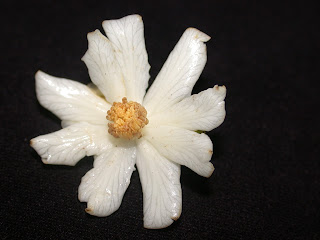Hoje nós temos um pequeno desafio, só para relaxar (é sexta-feira aqui no Brasil).
Lembro-me de quando eu era estudante de graduação, havia alguns concursos nos Congressos Brasileiros de Botânica pedindo para a audiência tentar identificar algumas exsicatas. O problema era que as plantas eram apenas partes de raízes, troncos ou ramos estéreis. Havia um sistema de pontos, e as pessoas ganhavam mais pontos se pudessem identificar as espécies tão perto quanto possível (até família, gênero ou espécie). Havia prêmios aos vencedores, como livros.
Com o mesmo espírito, logo abaixo você pode ver uma parte de uma imagem de planta. Pode me dizer qual planta é essa? Deixe o seu palpite nos comentários, em português ou inglês (será respondida amanhã à noite).
--------------------------------------------------------------------
Today we have a little challenge, just to relax (it is Friday here in Brazil).
I remember when I was a undergraduate student there were some contests in the Brazilian Botanical Congresses asking the audience to try identifying some exsicatae. The problem was plants were just portions of roots, trunks or sterile branches. There was a system of points, and people earned more points if they were able to identify the species as close as they could (till family, genus, or species). There were prizes to the winners, like books.
Taking the same spirit, below you can see a portion of a picture of a plant. Can you tell me what plant is this? Leave your guess in the comments, in Portuguese or English (will be answered tomorrow at night).
 |
| #1 |












